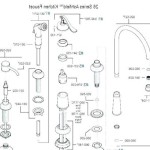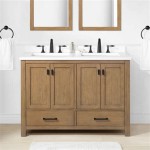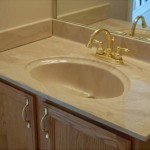Yellow Dripping Down Bathroom Walls: Causes and Solutions
Discovering yellow drips staining bathroom walls can be alarming. This unsightly issue often indicates an underlying problem that requires attention. Addressing the root cause is crucial to prevent further damage and maintain a healthy bathroom environment. This article explores the common causes of yellow dripping on bathroom walls and offers effective solutions.
Rust from Metal Pipes
One of the most frequent culprits behind yellow drips is rust. Older homes with galvanized steel pipes are particularly susceptible to corrosion. As water flows through these pipes, it picks up rust particles, which can then manifest as yellow or orange stains on bathroom surfaces, especially around fixtures and pipe penetrations. The dripping appearance is due to the water carrying these particles and depositing them as it evaporates.
Minerals in Hard Water
Hard water contains high concentrations of minerals, primarily calcium and magnesium. While not harmful to health, these minerals can cause a variety of plumbing issues. As hard water evaporates on bathroom surfaces, it leaves behind mineral deposits that appear as yellowish or whitish stains. Over time, these deposits can build up and create a dripping or streaking effect on walls and fixtures.
Leaking Pipes and Fixtures
A less obvious but potentially more serious cause of yellow drips is a leak within the wall cavity. A slow leak from a pipe or fixture can allow water to seep into the surrounding materials, including drywall and insulation. This moisture can dissolve minerals and other substances, creating a yellowish discoloration that eventually seeps through the wall surface, appearing as a drip.
Soap Scum and Residue
While less common as a primary cause of dripping stains, soap scum and cleaning product residue can contribute to yellowing. These substances can combine with minerals in hard water and build up on bathroom surfaces, creating a sticky film that attracts dirt and grime. This can lead to a yellowish discoloration that may appear to drip, especially on tiled walls.
Condensation and Mold Growth
Bathrooms are prone to high humidity levels due to showering and bathing. This can lead to condensation on walls and other surfaces. If not properly ventilated, this moisture can promote the growth of mold and mildew. Certain types of mold can produce a yellowish or brownish discoloration that may resemble dripping stains.
Improperly Sealed Grout
In tiled bathrooms, grout lines are vulnerable to staining and discoloration if not properly sealed. Porous grout can absorb water, minerals, and soap residue, leading to a yellowish appearance. This discoloration can sometimes spread down the tiles, giving the impression of a dripping stain.
Addressing Yellow Dripping on Bathroom Walls
Identifying the specific cause is crucial for effective remediation. Here are some solutions based on the potential causes:
Solutions for Rust
Replacing galvanized steel pipes with copper or PEX piping is the most effective long-term solution for rust-related issues. Water filtration systems can also help remove rust particles from the water supply. For surface stains, rust removers can be used, but always test in an inconspicuous area first.
Solutions for Hard Water Minerals
Installing a water softener can significantly reduce mineral buildup. Regular cleaning with vinegar or a specialized hard water stain remover can help remove existing deposits. Squeegeeing shower walls after each use can also prevent mineral buildup.
Solutions for Leaks
Addressing leaks promptly is essential to prevent further damage. This may involve repairing or replacing leaky pipes or fixtures. A plumber should be consulted for leaks within wall cavities.
Solutions for Soap Scum and Residue
Regular cleaning with a bathroom cleaner specifically designed to combat soap scum can prevent buildup. A mixture of baking soda and vinegar can also be an effective natural cleaning solution.
Solutions for Condensation and Mold
Improving bathroom ventilation is crucial to prevent mold growth. Ensure adequate exhaust fan operation and consider opening a window during and after showering. Treat existing mold with a suitable mold and mildew remover, following manufacturer instructions carefully.
Solutions for Improperly Sealed Grout
Cleaning grout with a grout cleaner and resealing it with a high-quality grout sealer can prevent further staining and discoloration. Heavily stained or damaged grout may require replacement.
By understanding the potential causes and implementing the appropriate solutions, homeowners can effectively address yellow dripping on bathroom walls and maintain a clean and healthy bathroom environment.

How To Fix Yellow Drips On Walls And Ceilings

Why Do Bathroom Walls Sweat Yellow And How To Prevent It Loo Academy

How To Clean Yellow Drips On Bathroom Walls Diy 5 Methods

Why Your Walls Might Bleed Hunker

How To Fix Yellow Drips On Walls And Ceilings

Random Dried Up Stains Dripping Down The Bathroom Wall Picture Of Travelodge By Wyndham Monroe Tripadvisor

Fixing Yellow Oily Drops On Walls Doityourself Com

How To Get Water Stains Off Bathroom Walls Igloo Surfaces

How To Fix Yellow Drips On Walls And Ceilings

Sticky Humidity On Bathroom Walls Hometalk
Related Posts







